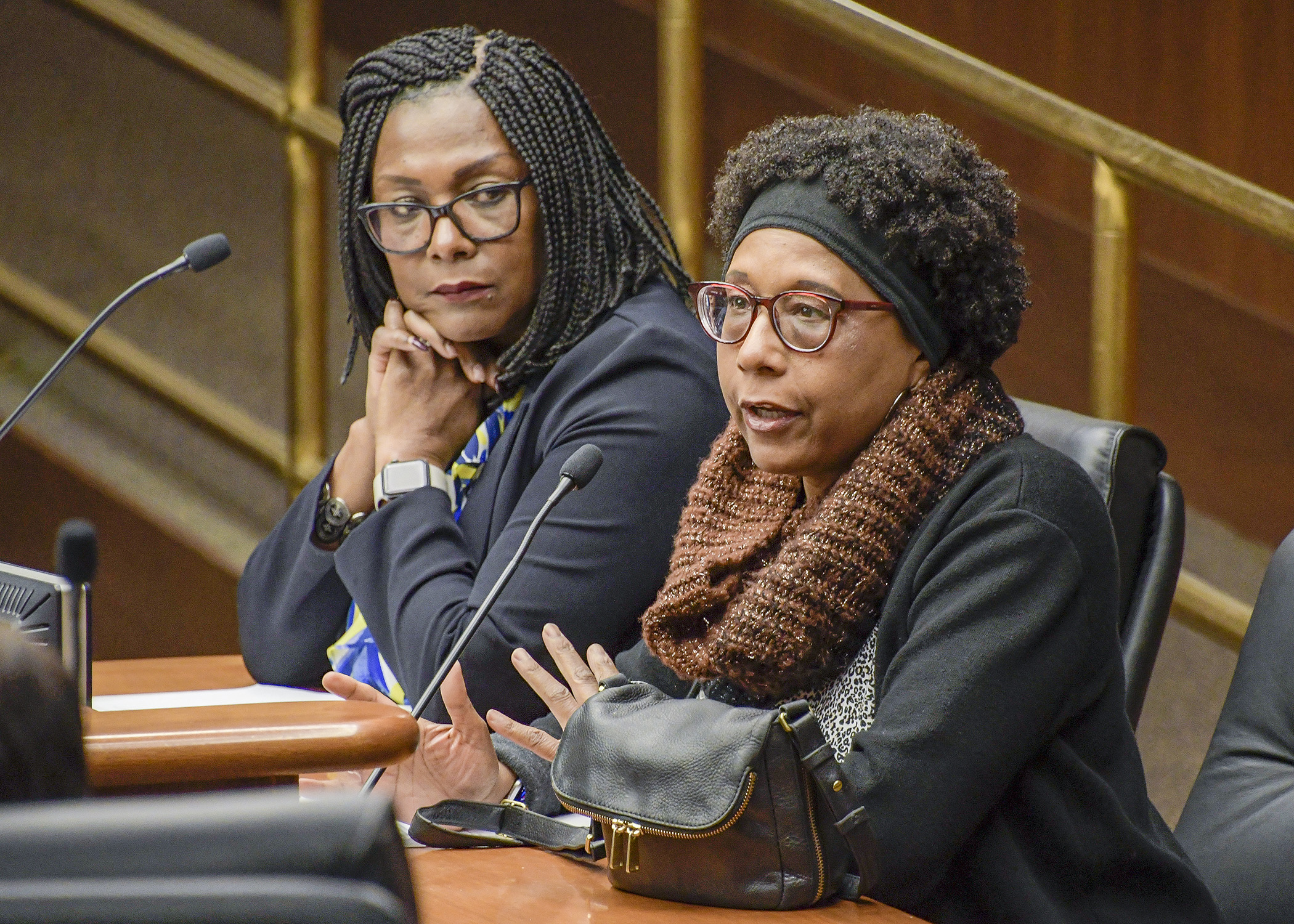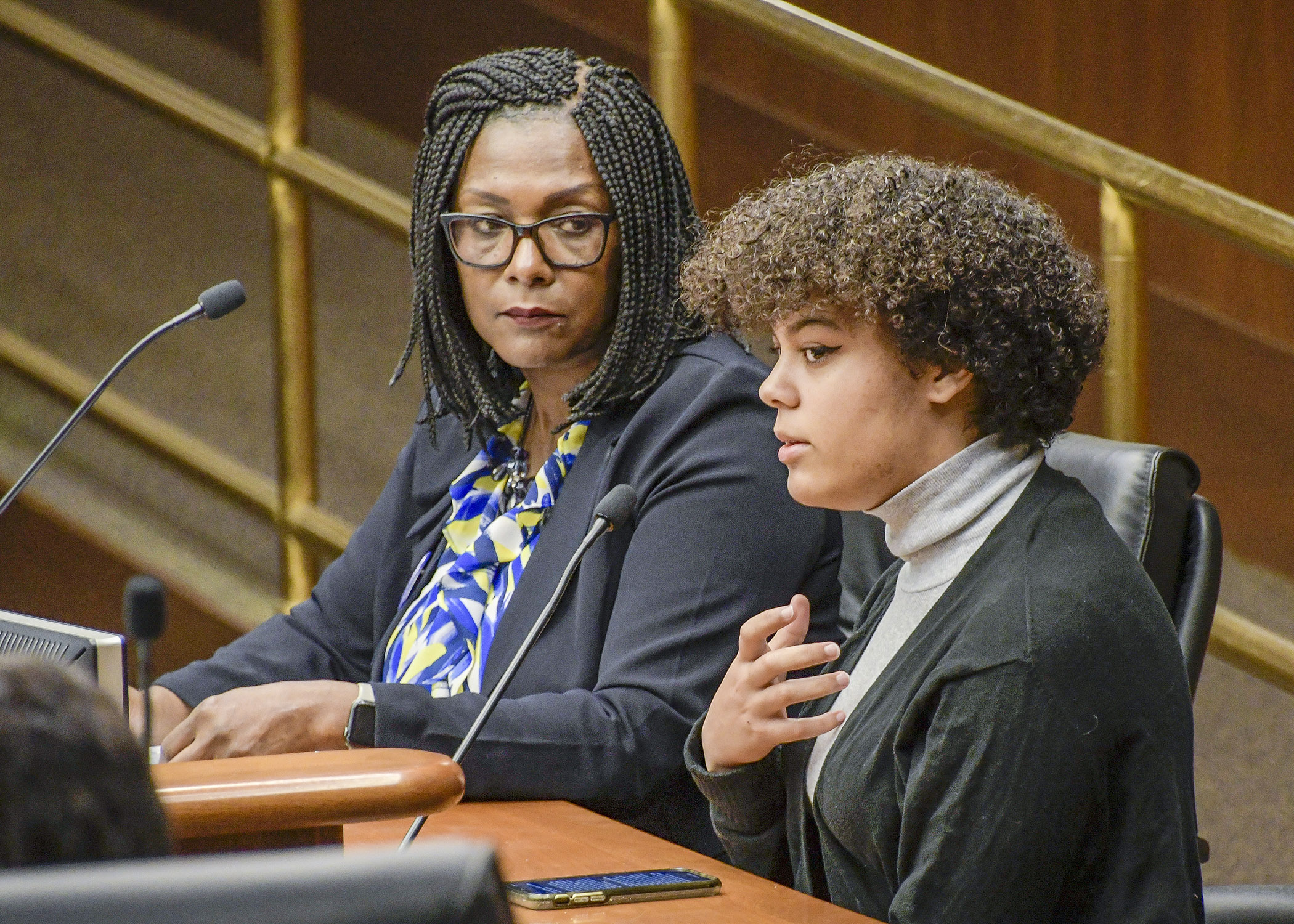Bill seeks to end discrimination on the basis of hair

As Linda Garrett-Johnson was combing her hair a couple years ago, it began falling into the sink. This alarmed her, but not because she believed she was sick.
Garrett-Johnson’s hair was falling out because she had been ironing it for many years, worried her corporate employer might not accept the look of her natural hair.
“I had a decision to make,” Garrett-Johnson told the House Government Operations Committee Thursday. “Do I go to work and continue to flat-iron my hair and probably end up bald, or do I start to wear it naturally? I was petrified.”
That fear is shared by many Minnesotans. But HF3103, sponsored by Rep. Rena Moran (DFL-St. Paul), attempts to alleviate those concerns by adding into the Minnesota Human Rights Act a definition of race that includes provisions for hair.
The act is meant to provide freedom from discrimination on the basis of color, creed, religion, sex, and a number of other areas, including race. The definition in the bill, which was amended, states: "‘Race’ is inclusive of traits associated with race, including but not limited to hair texture and hair styles such as braids, locks, and twists.”
The committee approved HF3103 and referred it to the House Judiciary Finance and Civil Law Division. There is no Senate companion.
California and New York have recently passed similar legislation, part of a national effort known as the CROWN (Creating a Respectful and Open World for Natural hair) Act. Its goal is to ensure statutory protection to hair texture and protective styles in state education codes and the federal Fair Employment and Housing Act.
 Nyahbinghi Selassie, a freshman at Irondale High School, testifies in support of a bill sponsored by Rep. Rena Moran, left, to add a definition of race to the Minnesota Human Rights Act. Photo by Andrew VonBank
Nyahbinghi Selassie, a freshman at Irondale High School, testifies in support of a bill sponsored by Rep. Rena Moran, left, to add a definition of race to the Minnesota Human Rights Act. Photo by Andrew VonBankGarrett-Johnson, who was one of several testifiers who shared their experiences, said she chose to stop ironing her hair and her employer did nothing to punish her. But Human Rights Commissioner Rebecca Lucero said that others have been.
Lucero cited examples from around the country and said there was a recent case in Minnesota where an employer changed a work policy regarding hair, then fired several employees who would not comply.
The department intervened and the matter was settled with the workers being rehired, but Lucero said the problem persists.
“While race discrimination is already prohibited under the Minnesota Human Rights Act, this bill provides the plain-language clarity to ensure that when we’re talking about race we’re including hairstyles inherent to racial identity,” Lucero said.
Rep. John Heinrich (R-Anoka) asked whether employers who had specific dress or appearance provisions meant to ensure workplace and employee safety would be impacted by the bill.
Rep. Mike Freiberg (DFL-Golden Valley), the division chair, said state statutes on discriminatory practices already include an exception for employers that reads, “Except when based on a bona fide occupational qualification.”
Moran said many people face consequences because of their hair, although those who haven’t experienced those same issues and feelings may have a difficult time understanding why something must be done.
“I hope, through the many stories you have heard, you understand that the discrimination is real," Moran said. "It should be illegal for someone to be fired or removed from a job because of their natural hair.”
Related Articles
Search Session Daily
Advanced Search OptionsPriority Dailies
Ways and Means Committee OKs proposed $512 million supplemental budget on party-line vote
By Mike Cook Meeting more needs or fiscal irresponsibility is one way to sum up the differences among the two parties on a supplemental spending package a year after a $72 billion state budg...
Meeting more needs or fiscal irresponsibility is one way to sum up the differences among the two parties on a supplemental spending package a year after a $72 billion state budg...
Minnesota’s projected budget surplus balloons to $3.7 billion, but fiscal pressure still looms
By Rob Hubbard Just as Minnesota has experienced a warmer winter than usual, so has the state’s budget outlook warmed over the past few months.
On Thursday, Minnesota Management and Budget...
Just as Minnesota has experienced a warmer winter than usual, so has the state’s budget outlook warmed over the past few months.
On Thursday, Minnesota Management and Budget...